The Political ‘Places’ of the Parisian Protests
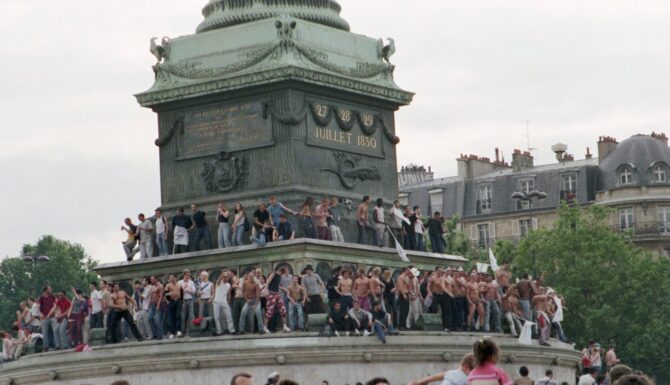

It’s no secret that France doesn’t shy away from political expression. Though I don’t believe in the stereotype of French arrogance, the French certainly live up to their reputation for striking without demur. In my modest eight months of living in Paris, I’ve witnessed no less than 20 days of strikes.
After President Emmanuel Macron’s controversial decision to trigger Article 49.3, raising the retirement age without a vote in the National Assembly, the streets of Paris have been flooded with protests, known in French as manifestations.
Global media outlets have been quick to show dramatic footage of French citizens storming the country’s major cities, with fire and tear gas turning the air hazy, making the blue glow of police sirens all the more ominous.
These strikes have affected almost all public sectors: from the trash in the streets (thankfully now cleaned up) to the delays on public transport. For myself as a Brit, the current rail strikes in Britain seem novel, yet across the Channel, France has seen a rail strike take place every year since 1947, according to the state-owned SNCF railway company.
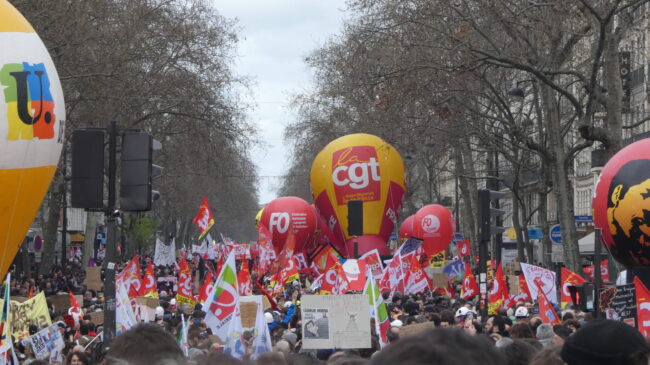
Demonstrators flying flags and balloons of various unions in Paris on 23 March. Photo credit: Rémi Simonnin / Wikimedia commons
But tourists, fear not! What the media neglects to explain is that these disruptions are not taking place over the entirety of Paris, and it is easy to avoid getting caught up in them. In fact, the manifestations across Paris predominantly take place in four major squares. The most popular route of the manifestations begins in Place de la République and continues to Place de la Bastille before reaching Place de la Nation. Place de la Concorde is the fourth square that is also a common location for protests, with all of these squares hosting such demonstrations since the 19th century.
Why have these Parisian places become so connected to political action and democracy? Together let’s walk the course of the manifestations to learn about the rich history of each stop along the route.
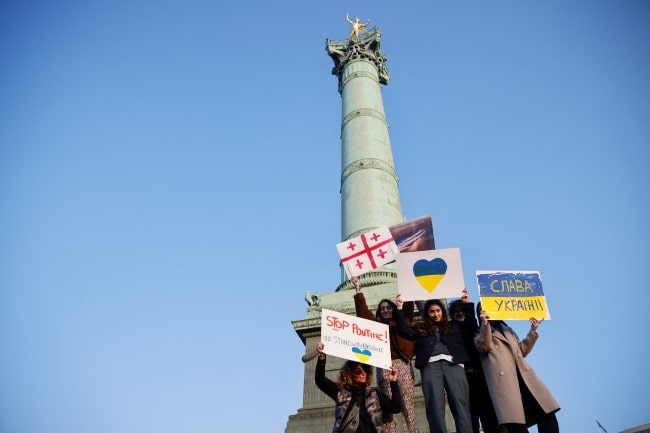
People hold placards during an anti-war protest at the Place de la Republique, following Russia’s invasion of Ukraine, in Paris, France March 5, 2022 © REUTERS/Johanna Geron,
Place de la République
The route starts at Place de la République the third largest square in Paris, which is centrally located on a major crossroads and served by several metro lines and bus routes. It is for this reason, and also for its historical significance, that it’s been a popular meeting point for demonstrations throughout recent history.
Initially known as Place de Chateau d’Eau, in 1879 the square was renamed in honor of the French Republic – a relatively new political system, established as a result of the 1789 French Revolution. The term “République” refers to a governmental structure that places power in the people, as opposed to a monarch or any other figure of autocratic rule. The renaming of the square was meant to celebrate the ideals of the French Republic- creating a reminder of the significance of public spaces, where individuals have the right to come together, express their beliefs, and participate in democratic processes. Today Place de la République stands as a symbol of the French Republic’s commitment to liberty, equality, and fraternity, hosting protests, gatherings, and events that fulfill these fundamental values.
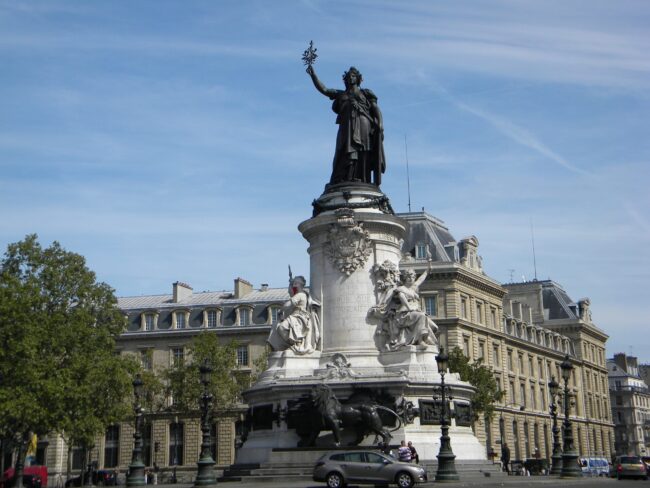
Place de la République. Photo credit: Britchi Mirela / Wikimedia commons
Due northeast of the square, the Vérines barracks stand from the Second World War. These barracks were the last German stronghold in Paris until they were surrendered on August 15th, 1944.
It was here at the Place de la République that tributes for the Charlie Hebdo shootings took place in 2015, with the “Republican marches” of the 10th and 11th of January moving from Place de la République towards Place de la Nation. According to the Ministry of the Interior, these were the largest demonstrations in French history, with more than 2 million people taking to the streets of Paris.
When the horrific terrorist attacks took place across Paris on November 13th of that same year, the Place de la République once again became a place of contemplation. In January 2016, a cherry oak was planted on the edge of the square in memory of the victims.
Since these demonstrations, the Place de la République has come to symbolize France’s fierce freedom of expression and has played a fervent role in upholding the democracy of the country.

The Bastille in 1900. Public domain
Place de la Bastille
Continuing south for 1.8km along Boulevard Beaumarchais, the route then reaches Place de la Bastille, which has its political foundations in the French Revolution (1789-1799). A combination of economic, social, and political factors – including widespread poverty, inequality, and dissatisfaction with the absolute monarchy- led to the watershed moment: the storming of the Bastille on the 14th of July. At this time, the square symbolized the authority of the monarchy and thus was the perfect setting for a rebellion from revolutionary insurgents. This radical revolutionary period would last for 10 years until 1799.
To this day, the 14th of July is a French national holiday, known in English as Bastille Day, that celebrates the anniversary of this revolt, and Place de la Bastille has come to epitomize France’s national fight for freedom and serves as a place of republican demonstration.

Place de la Bastille in April 2021 after renovation works. Credit: Guillaume Flament / Wikimedia commons
In 1840, the iconic July Column that stands proudly in the center of the square was inaugurated to commemorate France’s second revolution, known as the July Revolution of 1830. The Parisian Communards of 1871 attempted to destroy the column by firing up to 30 shells at the structure, yet the column remained perfectly intact, despite the 30-meter-high flames that engulfed the square.
Since these revolutions, the square remains an area of public demonstration to honor Bastille day and the change that this uprising made to the country.

Panoramic view of the Place de la Nation. Credit: Francoise de Gandi / Wikimedia commons
Place de la Nation
A further 2km eastbound from Place de la Bastille, we walk along Rue du Faubourg Saint-Antoine to reach Place de la Nation. This square also has a rich political history that reflects the tumultuous political and social changes of the past two centuries.
Originally known as the Place du Trône, Place de la Nation was built in 1660 to celebrate the wedding of Louis XIV and Maria Theresa of Spain. It was later renamed the Place du Trône-Renversé during the French Revolution, in reference to the overthrow of the monarchy.
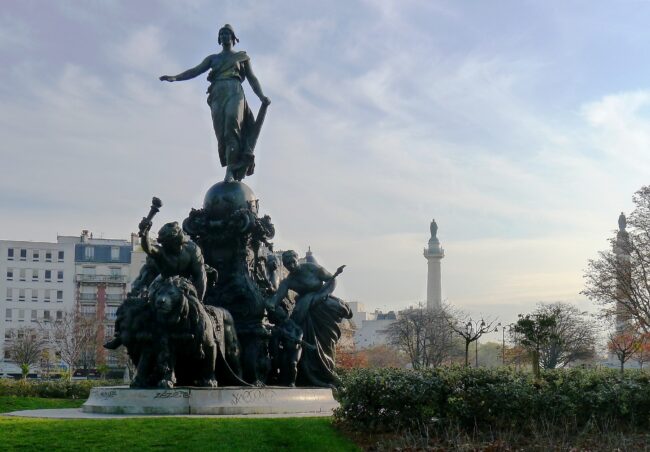
Le Triomphe de la République at Place de la Nation. Credit: Mbzt / Wikimedia commons
In 1880, the square was renamed again, this time as the Place de la Nation, as part of a broader effort to celebrate the ideals of the French Republic. The square became a popular location for political demonstrations and gatherings, particularly during the early 20th century when labor unions and socialist parties gained strength in France.
During the Second World War, the square was the site of several large Nazi rallies and propaganda events. After the war, it became a rallying point for the French Resistance and a symbol of French patriotism.
Today, Place de la Nation remains an important location for political demonstrations and gatherings, and is also a major transportation hub in Paris, with several metro lines converging at the square.
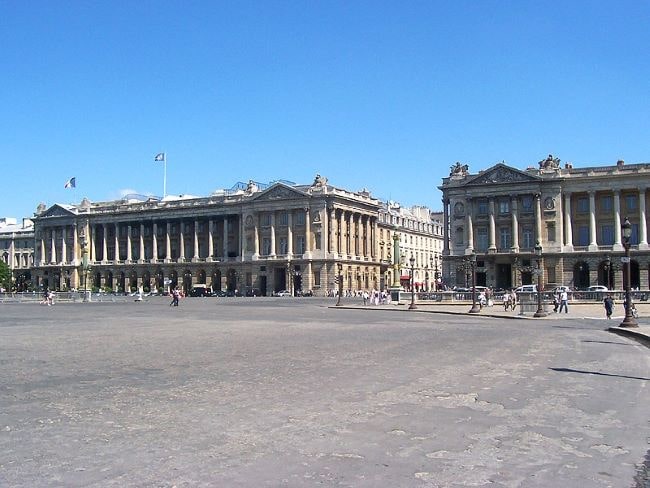
Place de la Concorde. © MarkusMark/ Wikimedia Commons
Place de la Concorde
A place that also deserves a mention for its role in the recent manifestations is Place de la Concorde. This square is the largest place in Paris and is located at the eastern end of the Champs-Élysées, and with a view of the Eiffel Tower, it has produced some of the most striking images of the recent protests. Due to its size, it is the most convenient location for large swathes of the public to group and express their common grievances.
On January 17th, 1793, in the midst of the revolution, the Assembly sentenced King Louis XVI to death for “conspiracy against public liberty and general safety” on a vote of 361 to 288. On January 21, the conviction was carried out. Nine months later, it was at this same location that his wife, Marie-Antoinette, was also beheaded on what was then called the Place de la Révolution, now known as the Place de la Concorde.
The year 1848 also witnessed a massive protest by republican activists and laborers demanding the abdication of King Louis Philippe at Place de la Concorde. The demonstration took an ugly turn as it escalated into a violent clash with the police, resulting in the loss of multiple lives.

Place de la Concorde and the obelisk. Photo: David Stanley/ Flickr
In May of 1968, the Place de la Concorde in Paris served as a central point of assembly for student-led protestors who clashed with police. This location also marked a pivotal moment in history when French President, Charles de Gaulle, delivered a notable speech outlining his plan to dissolve the National Assembly and call for new elections.
In recent times, the manifestations have also spilled into Place d’Italie, Place de l’Opéra, and Place Vauban.
The political history of France is full of demonstrations, and the change that these protests have made is obvious. More history is currently being made with the protests of 2023, and we will have to wait and see what changes, if any, these bring about.
Lead photo credit : The iconic July Column on the Place de la Bastille during a Pride Parade. Credit: Wikimedia commons/ Public domain


